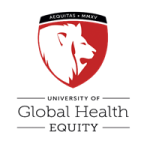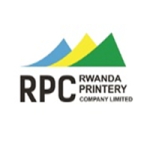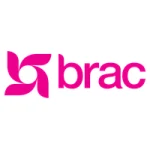AWF is a non-profit conservation organization, founded in 1961 with a mission to work together with the people of Africa to ensure the wildlife and wild lands thrive in modern in Africa”. AWF is headquartered in Nairobi, Kenya and working at different program levels in 38 landscapes in East, West, Central and Southern Africa.
Website: https://www.awf.org
TERMS OF REFERENCE
- Background
The Africa Wildlife Foundation (AWF), in collaboration with the Rwanda Development Board (RDB), has developed a comprehensive Conservation and Development Master Plan for the Volcanoes National Park Landscape (VNPL) in Rwanda. This master plan represents a pioneering approach to conservation that seeks to harmonize biodiversity protection with sustainable socio-economic development in the region.
The VNPL, situated within the Albertine Rift, is one of the most biodiverse areas in the world and home to the endangered mountain gorilla population. The master plan aims to address critical challenges facing the park, including the need for habitat expansion, mitigation of human-wildlife conflicts, and the promotion of sustainable livelihoods for surrounding communities.
The plan encompasses a multi-faceted approach, dividing the landscape into three primary zones: park expansion, forestry and eco-tourism, and agriculture and settlements. Each zone presents unique opportunities for conservation efforts and economic development. The park expansion zone focuses on activities such as reforestation, invasive species removal, and wildlife fence construction. The forestry and eco-tourism zone emphasize sustainable resource use and the development of nature-based tourism offerings. The agriculture and settlements zone aims to enhance agricultural productivity, promote high-value crops, and improve community infrastructure.
Financial and economic analyses have demonstrated the potential viability of the proposed investments, with projections indicating significant returns across various sectors. The overall project cost is estimated at USD 1,224.8 million, with a mix of public and private sector investments required. The plan is expected to generate substantial economic benefits, including increased tourism revenue, job creation, and improved household incomes in the surrounding communities.
A Conservation Investment Blueprint (CIB) has been developed as part of the master plan, serving as a strategic framework to attract investments and highlight areas where government support is needed to unlock private sector participation. The CIB identifies specific investment opportunities across the three zones, aligning with Rwanda’s national development goals and Vision 2050.
To realize the ambitious objectives of the VNPL Conservation and Development Master Plan, a comprehensive resource mobilization strategy is essential. This strategy will play a crucial role in identifying and securing the necessary financial resources, partnerships, and investments required for successful implementation. It will need to address the diverse funding needs across conservation activities, infrastructure development, agricultural enhancements, and community development initiatives.
The resource mobilization strategy must consider the unique challenges and opportunities presented by the VNPL, including the need to balance conservation priorities with economic development, engage a wide range of stakeholders, and align with national and international funding mechanisms for biodiversity conservation and sustainable development.
In this context, AWF and RDB are seeking the services of a qualified consultant to develop a robust and innovative resource mobilization strategy that will support the full realization of the VNPL Conservation and Development Master Plan’s goals and objectives.
- Objectives of the Assignment
The primary goal of this assignment is to develop a comprehensive and actionable Resource Mobilization Strategy that will support the successful implementation of the Volcanoes National Park Landscape (VNPL) Conservation and Development Master Plan. The strategy should provide a clear roadmap for securing the necessary financial resources, partnerships, and investments to realize the master plan’s vision of balanced conservation and sustainable development.
Specifically, the objectives of this assignment are:
- To conduct a thorough analysis of the funding landscape relevant to the VNPL master plan, including potential public, private, and international funding sources, as well as innovative financing mechanisms suitable for conservation and development projects.
- To develop a targeted approach for attracting and securing investments across the three main zones identified in the master plan: park expansion, forestry and eco-tourism, and agriculture and settlements. This approach should consider the unique needs and opportunities within each zone.
- To create strategies for leveraging public sector funding to catalyze private sector investments, with a focus on developing public-private partnerships that can drive sustainable economic growth while supporting conservation efforts.
- To design a framework for engaging and mobilizing resources from international donors, conservation organizations, and impact investors interested in supporting biodiversity conservation and sustainable community development.
- To formulate strategies for generating sustainable long-term funding streams that can support ongoing conservation efforts and community development initiatives beyond the initial implementation phase of the master plan.
- To develop a phased approach to resource mobilization that aligns with the master plan’s implementation timeline and prioritizes critical funding needs as identified in the financial and economic analysis.
- To create a stakeholder engagement plan that outlines how to effectively communicate the VNPL master plan’s vision and investment opportunities to potential funders, investors, and partners.
- To propose innovative financing mechanisms and structures that can help de-risk investments and attract a broader range of funders and investors to the VNPL projects.
- To ensure alignment of the resource mobilization strategy with Rwanda’s national development priorities, including Vision 2050 and relevant sector strategies, to maximize potential government support and policy alignment.
- To develop monitoring and evaluation frameworks that will allow for tracking the success of resource mobilization efforts and adapting strategies as needed over time.
The consultant is expected to deliver a Resource Mobilization Strategy that is practical, innovative, and tailored to the unique context of the VNPL Conservation and Development Master Plan. The strategy should provide clear guidance on how to secure the estimated USD 1,224.8 million in investments needed over the 15-year period, balancing both public and private sector contributions. It should also consider the potential for scaling and replicating successful funding models to support similar conservation and development initiatives in other regions.
- Scope of Work
The consultant will be responsible for developing a comprehensive Resource Mobilization Strategy for the Volcanoes National Park Landscape (VNPL) Conservation and Development Master Plan. The scope of work includes, but is not limited to, the following tasks:
- Document Review and Analysis: Conduct a thorough review of all relevant documentation, including the VNPL Conservation and Development Master Plan, baseline assessment, land use plan, Conservation Investment Blueprint, and financial and economic analysis. Analyze these documents to gain a deep understanding of the project’s objectives, financial requirements, and potential investment opportunities across all zones.
- Stakeholder Consultations: Engage with key stakeholders, including representatives from the Africa Wildlife Foundation, Rwanda Development Board, relevant government ministries, local communities, potential investors, and international donors. Conduct interviews, focus group discussions, and workshops to gather insights on funding priorities, challenges, and opportunities.
- Funding Landscape Analysis: Perform a comprehensive analysis of the current and potential funding landscape relevant to the VNPL master plan. This should include mapping of public sector funding sources (national and local government budgets), private sector investors (both domestic and international), international donors, conservation organizations, impact investors, and innovative financing mechanisms (e.g., green bonds, carbon credits, payment for ecosystem services).
- Investment Opportunity Profiling: Based on the Conservation Investment Blueprint and financial analysis, develop detailed profiles of investment opportunities across the three zones (park expansion, forestry and eco-tourism, agriculture and settlements). These profiles should highlight the unique value propositions, potential returns, and conservation impacts of each opportunity.
- Public-Private Partnership (PPP) Framework: Develop a framework for structuring and promoting public-private partnerships that can effectively leverage public sector funding to attract private investments. This should include recommendations on risk-sharing mechanisms, governance structures, and alignment with national PPP policies.
- International Donor Engagement Strategy: Formulate a targeted strategy for engaging international donors and conservation organizations. This should include identification of potential donors, alignment of VNPL objectives with donor priorities, and development of compelling funding proposals.
- Innovative Financing Mechanisms: Explore and propose innovative financing mechanisms suitable for the VNPL context. This may include conservation trust funds, debt-for-nature swaps, biodiversity offsets, or other emerging tools in conservation finance.
- Resource Mobilization Action Plan: Develop a detailed, phased action plan for resource mobilization, aligned with the master plan’s implementation timeline. This should include specific targets, activities, responsibilities, and timelines for securing funding across different sources and project components.
- Stakeholder Engagement and Communication Plan: Create a comprehensive plan for engaging potential funders and investors. This should include development of targeted messaging, identification of key platforms and events for outreach, and strategies for building and maintaining relationships with funders.
- Monitoring, Evaluation, and Learning Framework: Design a framework for tracking the progress and effectiveness of resource mobilization efforts. This should include key performance indicators, reporting mechanisms, and processes for adapting the strategy based on lessons learned.
- Risk Assessment and Mitigation: Identify potential risks to successful resource mobilization and propose mitigation strategies. This should consider factors such as changes in donor priorities, economic fluctuations, and potential conflicts between conservation and development objectives.
- Capacity Building Recommendations: Assess the current capacity for resource mobilization within relevant institutions and provide recommendations for strengthening these capabilities to ensure long-term sustainability of fundraising efforts.
- Validation and Refinement: Present draft strategies to key stakeholders for feedback and validation. Incorporate feedback and refine the strategy to ensure broad buy-in and alignment with institutional priorities.
The consultant is expected to work closely with the AWF and RDB teams throughout the assignment, providing regular updates and seeking input at key stages of strategy development. The final Resource Mobilization Strategy should be comprehensive, actionable, and tailored to the unique context and objectives of the VNPL Conservation and Development Master Plan.
- Deliverables
The consultant is expected to produce the following deliverables as part of this assignment:
Inception Report: To be submitted within One weeks of the contract start date, this report should outline the consultant’s understanding of the assignment, proposed methodology, detailed work plan, and any initial findings from the document review. The report should also identify any potential challenges and proposed solutions.
Stakeholder Consultation Report: A comprehensive report summarizing the findings from stakeholder consultations, including key insights, identified priorities, and potential areas of collaboration or conflict. This report should be submitted within 4 weeks of the contract start date.
Funding Landscape Analysis Report: A detailed analysis of the current and potential funding landscape for the VNPL Conservation and Development Master Plan, including an assessment of public, private, and international funding sources, as well as innovative financing mechanisms. This report should be submitted within 8 weeks of the contract start date.
Draft Resource Mobilization Strategy: A comprehensive draft strategy document that addresses all elements outlined in the scope of work. This should include the overall strategic approach, specific strategies for different funding sources, the resource mobilization action plan, stakeholder engagement plan, and monitoring and evaluation framework. The draft strategy should be submitted within 10 weeks of the contract start date.
Presentation Materials: A set of high-quality presentation materials (e.g., PowerPoint slides, executive summary) suitable for presenting the draft strategy to key stakeholders, including senior government officials and potential funders. These materials should be submitted along with the draft strategy.
Validation Workshop Report: A report summarizing the feedback received during the validation workshop(s) with key stakeholders, including proposed revisions to the draft strategy. This report should be submitted within one weeks of the validation workshop.
Final Resource Mobilization Strategy: The final strategy document, incorporating feedback from stakeholders and addressing any revisions requested by AWF and RDB. This should be a comprehensive, actionable document that provides clear guidance for implementing the resource mobilization efforts. The final strategy should be submitted within Twelve weeks of the contract start date.
Implementation Toolkit: A practical toolkit to support the implementation of the Resource Mobilization Strategy, including templates for funding proposals, donor engagement materials, and tracking tools for monitoring resource mobilization efforts.
Executive Summary: A concise, high-level summary of the Resource Mobilization Strategy, suitable for sharing with senior decision-makers and potential funders.
Final Presentation: A comprehensive presentation of the final Resource Mobilization Strategy to AWF, RDB, and other key stakeholders as identified by the client.
All deliverables should be submitted in English, in both electronic (editable formats such as Word and PowerPoint, as well as PDF) and hard copy formats. The consultant is expected to maintain open lines of communication with the client throughout the assignment and may be required to provide informal progress updates or additional clarifications as needed.
The final acceptance of all deliverables is subject to the approval of AWF and RDB. The consultant should be prepared to make revisions as necessary to ensure the deliverables meet the required standards and fully address the objectives of the assignment.
- Required Qualifications
The consultant or consulting team should possess a strong combination of expertise in conservation finance, strategic planning, and resource mobilization, with a deep understanding of the African context, particularly Rwanda. The following qualifications are required:
Education:
- Advanced degree (master’s or higher) in a relevant field such as Conservation Finance, Environmental Economics, Business Administration, International Development, or a closely related discipline.
Professional Experience:
- Minimum of 10 years of experience in resource mobilization, fundraising, or conservation finance, with a proven track record of developing successful strategies for large-scale conservation and development projects.
- Demonstrated experience in designing and implementing innovative financing mechanisms for conservation and sustainable development initiatives.
- Strong understanding of the funding landscape for conservation and development projects in Africa, including familiarity with key donors, investors, and financing trends.
- Previous experience working with government agencies, international NGOs, and private sector entities on conservation and development projects in Rwanda or the East African region.
- Proven ability to engage effectively with a wide range of stakeholders, including high-level government officials, private sector investors, and international donors.
- Technical Knowledge:
- In-depth knowledge of conservation finance tools and mechanisms, including but not limited to impact investing, blended finance, green bonds, and payment for ecosystem services.
- Strong understanding of public-private partnership models in the context of conservation and sustainable development.
- Familiarity with international best practices in biodiversity conservation and sustainable tourism development.
- Knowledge of Rwanda’s national development priorities, particularly those related to conservation, tourism, and rural development.
Skills:
- Excellent analytical and strategic thinking skills, with the ability to synthesize complex information and develop actionable strategies.
- Strong financial modeling and economic analysis skills.
- Exceptional writing and communication skills in English, with the ability to produce high-quality reports and presentations for diverse audiences.
- Proficiency in relevant software tools for data analysis, financial modeling, and report writing.
Additional Desirable Qualifications:
- Working knowledge of French or Kinyarwanda would be an advantage.
- Familiarity with the Volcanoes National Park landscape and its unique conservation and development challenges.
- Experience in developing resource mobilization strategies for UNESCO World Heritage Sites or other protected areas of international significance.
- Previous work experience with the Africa Wildlife Foundation, Rwanda Development Board, or other key stakeholders involved in the VNPL Conservation and Development Master Plan.
The consultant or consulting team must demonstrate a commitment to conservation and sustainable development principles, as well as a deep appreciation for the unique ecological and cultural value of the Volcanoes National Park landscape.
AWF and RDB encourage applications from consultants or teams that bring diverse perspectives and experiences to the assignment. We particularly welcome applications from qualified candidates based in Rwanda or the East African region.
- Submission Guidelines
Interested consultants or consulting teams are invited to submit their proposals for this assignment. The proposal should include the following components:
Technical Proposal:
- A brief introduction of the consultant or consulting team, highlighting relevant experience and qualifications.
- A detailed methodology outlining the approach to developing the Resource Mobilization Strategy, including proposed data collection methods, analytical frameworks, and stakeholder engagement processes.
- A work plan with a detailed timeline for each phase of the assignment, aligned with the provided 24-week timeline.
- A team composition and task assignment plan (if applicable), clearly outlining the roles and responsibilities of each team member.
- CVs of all key personnel who will be involved in the assignment.
- At least three relevant references from similar assignments completed in the past five years.
Financial Proposal:
- A detailed budget breakdown, including daily rates, estimated number of working days, travel costs, and any other relevant expenses.
- The financial proposal should be provided in a separate file from the technical proposal.
Additional Requirements:
- A sample of previous work relevant to this assignment (e.g., a resource mobilization strategy or similar document developed for another client).
- A signed declaration of any potential conflicts of interest.
Submission Format:
- All documents should be submitted in English.
- Proposals should be submitted electronically in PDF format, with the technical and financial proposals in separate files.
- The email subject line should read: “Proposal – Resource Mobilization Strategy for VNPL Master Plan”
Submission Deadline:
All proposals must be submitted no later than Oct 15, 2024, at 5:00 PM East Africa Time. Late submissions will not be considered.
Submission Email:
Please send your complete proposal package to procurement@awf.org with a copy to kigali@awf.org
Evaluation Process:
- Proposals will be evaluated based on the following criteria:
- Technical approach and methodology (40%)
- Relevant experience and qualifications of the consultant/team (30%)
- Understanding of the assignment and local context (20%)
- Financial proposal (10%)
Shortlisted candidates may be invited for an interview or to make a presentation as part of the final selection process.
Questions and Clarifications:
Any questions or requests for clarification regarding this Terms of Reference should be submitted in writing to piragena@awf.org no later than October 15, 2024. Responses to all questions will be shared with all potential applicants.
AWF and RDB reserve the right to accept or reject any proposal and to annul the selection process and reject all proposals at any time prior to contract award, without thereby incurring any liability to the affected consultants.
We thank all applicants for their interest; however, only shortlisted candidates will be contacted.
Attachment




